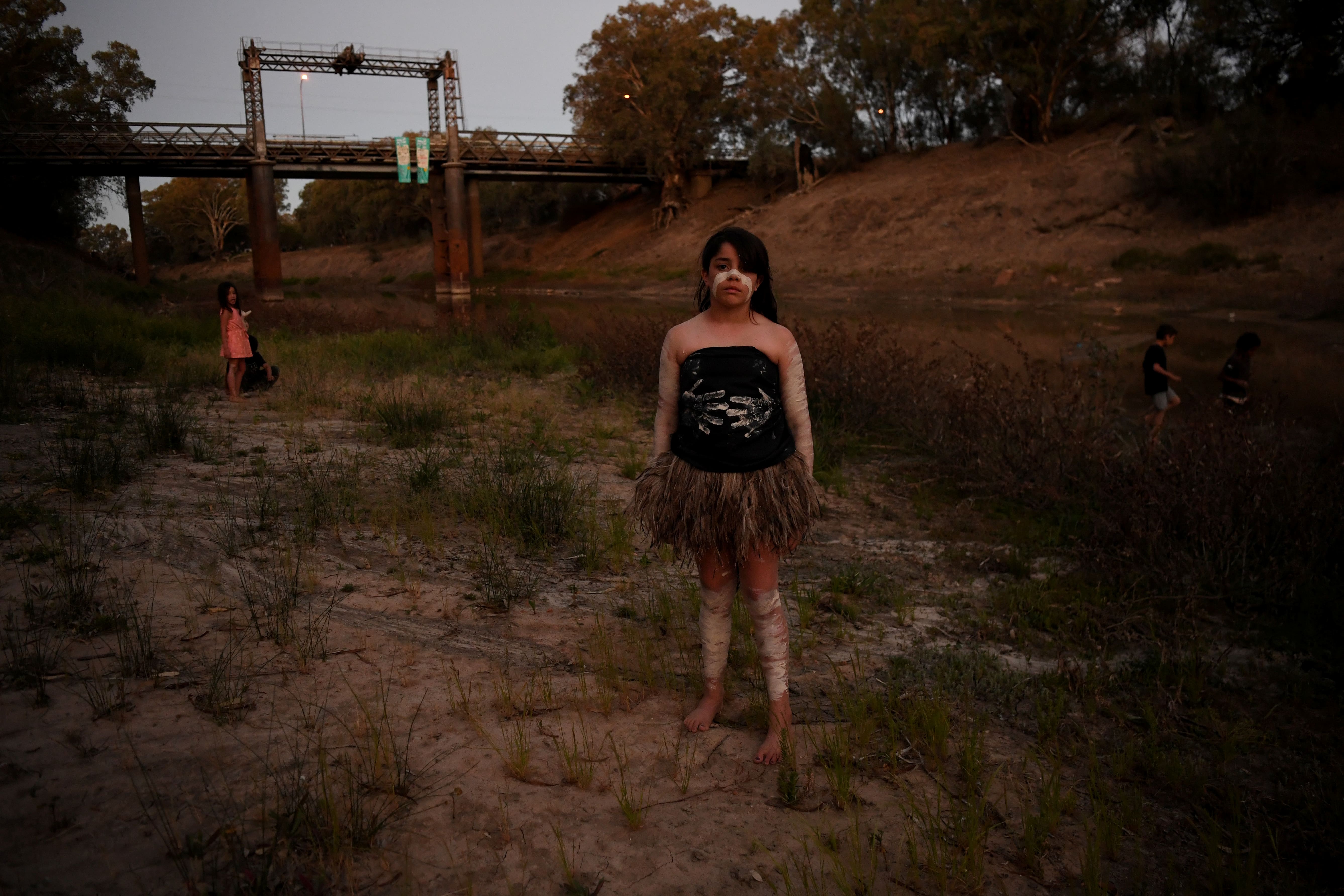Australia rains: Dancing in the street, not so much down on the farm
 Reduced to a string of stagnant mustard-coloured pools, fouled in places with pesticide runoff and stinking with the rotting carcasses of cattle and fish, the Darling River is running dry. The parched earth of Australia’s longest waterway, if tributaries are included, is in the grip of the continent’s most severe drought in a century. At Menindee, 830 km west of Sydney, despair has turned to anger as residents blame the government for exacerbating the drought by drawing down river water in 2017 for irrigation and other uses downstream. Locals now avoid using tap water for drinking and washing babies and children, saying it has caused skin irritation, and prefer boxed and bottled water instead. (Photo: Reuters)
Reduced to a string of stagnant mustard-coloured pools, fouled in places with pesticide runoff and stinking with the rotting carcasses of cattle and fish, the Darling River is running dry. The parched earth of Australia’s longest waterway, if tributaries are included, is in the grip of the continent’s most severe drought in a century. At Menindee, 830 km west of Sydney, despair has turned to anger as residents blame the government for exacerbating the drought by drawing down river water in 2017 for irrigation and other uses downstream. Locals now avoid using tap water for drinking and washing babies and children, saying it has caused skin irritation, and prefer boxed and bottled water instead. (Photo: Reuters) SYDNEY, Nov 4 (Reuters) – The heaviest rains in years have fallen across parts of Australia’s east coast, bringing relief to some struggling livestock farmers, although the showers are not likely to break a drought that has crippled the country’s grains sector.
Australia’s Bureau of Meteorology said some parts of the state of New South Wales received nearly 100 mm (4 inches) of rain over Sunday. The rainfall was particularly welcome in towns such as Bourke, 800 km (500 miles) northwest of Sydney, where people had to start drinking groundwater in April.
Groundwater, also called bore water, is sometimes contaminated by minerals or chemicals as it seeps into aquifers below the earth’s surface.
“This much-needed rain will certainly bring some much-needed relief and smiles across the country,” said Oliver Gordon, a resident of Bourke.
One overjoyed local was Gordon’s father, Andrew who can be seen in videos posted on social media wading through waterlogged fields and rolling in water.
More rains will be needed, though, to break a drought that has gripped a swathe of Australia’s southeast for three years, turning pastures brown and forcing ranchers to buy expensive feed grains to keep their herds alive.
Analysts said the rains may have come too late to save the grain harvest, set to begin within weeks, although the moisture will help cattle and other livestock graziers.
Wheat production is expected to fall well below 20 million tonnes, more than 22% below the 10-year average.
With many agricultural producers battling to stave off bankruptcy, Australia’s conservative government has been forced to offer grants and cheap loans to farmers.
Australia’s Deputy Prime Minister Michael McCormack warned that the impact of the drought would likely continue for years.
“It has settled the dust. It’s going to top up some dams. A bit of a green sheet across those very dry areas – but it’s not going to solve the drought,” he told reporters in Melbourne.
“The drought is going to take many months and indeed years to recover from.”
Reuters



